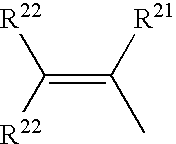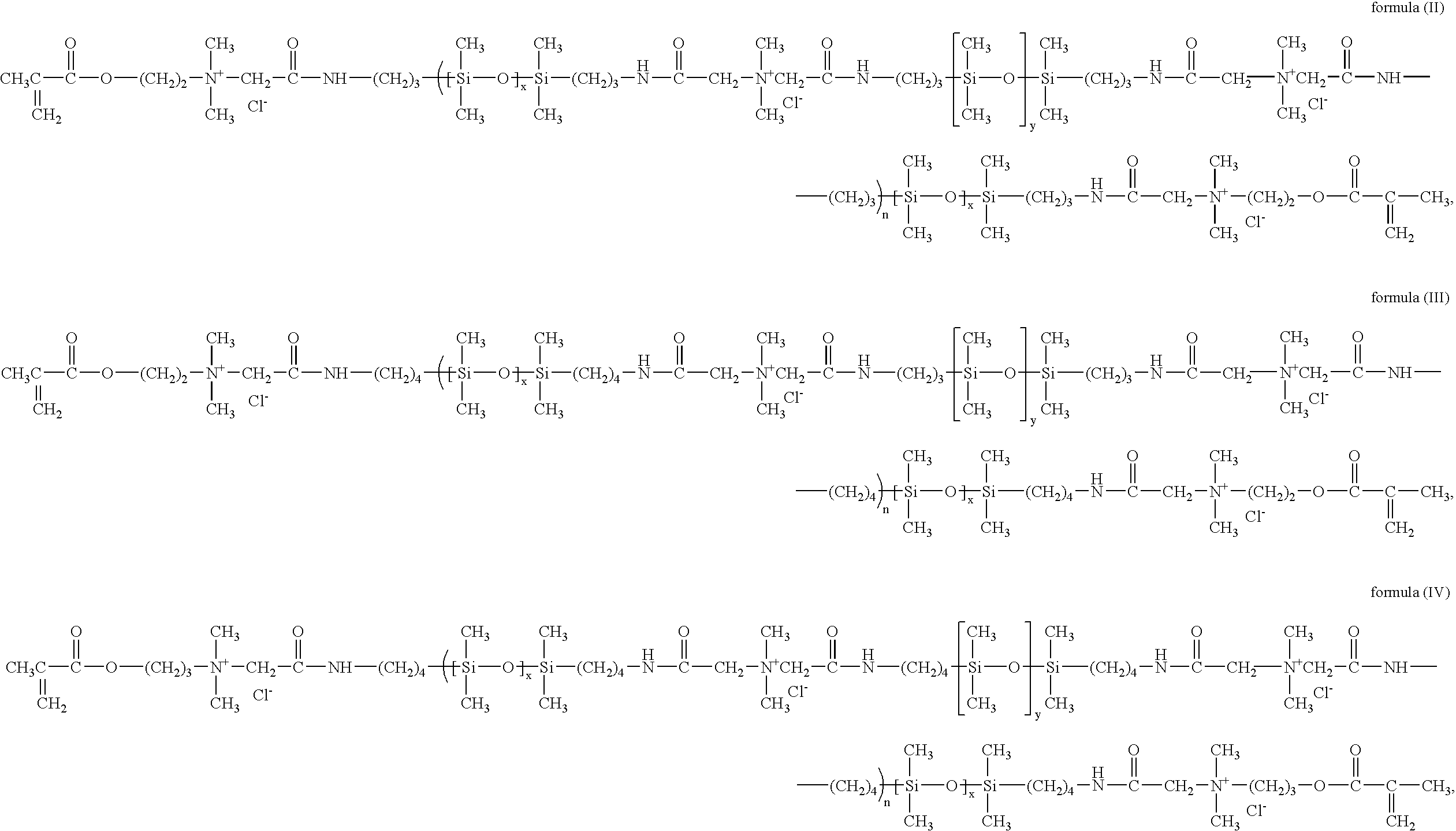Polymerizable siloxane-quaternary amine copolymers
a polymerizable, quaternary amine technology, applied in the field of polymer compositions, can solve the problems of difficult copolymerization and processing using standard hydrogel techniques, poor soluble in water,
- Summary
- Abstract
- Description
- Claims
- Application Information
AI Technical Summary
Benefits of technology
Problems solved by technology
Method used
Image
Examples
example 1
Synthesis of 4-Bromobutyl Terminated Poly(Dimethylsiloxane)
[0069]A solution of 1,3-bis(4-bromobutyl)tetramethyldisiloxane and octamethylcyclotetrasiloxane are treated with triflic acid and allowed to react 24 h at room temperature. The reaction is then quenched with sodium bicarbonate and allowed to stir an additional 24 h. The pressure filtered product is then vacuum stripped of excess reagent until no additional reagent is collected to afford the product as clear liquid.
example 2
Synthesis of (N,N-Dimethylaminoethyl)Butyl Ether Terminated Poly(Dimethylsiloxane)
[0070]Product from example 1 dissolved in tetrahydrofuran is cannulated onto a solution of sodium N,N-dimethylaminoethoxide, solution in tetrahydrofuran at 0° C. and allowed to react one hour. The product is then dissolved in pentane, washed with water, dried over magnesium sulfate, and solvent removed under reduced pressure to afford product.
example 3
Synthesis of Cationic Polymerizable End-Capped Poly(Quaternary Ammonium-Co-Dimethylsiloxane)
[0071]A solution of N,N-Dimethylaminoethyl methacrylate, 4-bromobutyl terminated poly(dimethylsiloxane) from example 1, and (N,N-Dimethylaminoethyl)butyl ether terminated poly(dimethylsiloxane) from example 2 in ethyl acetate is heated at 60° C. for a sufficient time as monitored by GPC and / or other analytical methods to afford acceptable conversion to prepolymer.
PUM
| Property | Measurement | Unit |
|---|---|---|
| thickness | aaaaa | aaaaa |
| width | aaaaa | aaaaa |
| gauge length | aaaaa | aaaaa |
Abstract
Description
Claims
Application Information
 Login to View More
Login to View More - R&D
- Intellectual Property
- Life Sciences
- Materials
- Tech Scout
- Unparalleled Data Quality
- Higher Quality Content
- 60% Fewer Hallucinations
Browse by: Latest US Patents, China's latest patents, Technical Efficacy Thesaurus, Application Domain, Technology Topic, Popular Technical Reports.
© 2025 PatSnap. All rights reserved.Legal|Privacy policy|Modern Slavery Act Transparency Statement|Sitemap|About US| Contact US: help@patsnap.com



